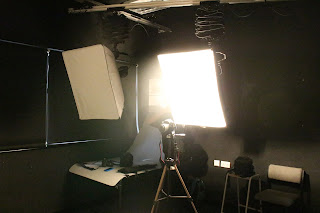1.
The Czechoslovak New Wave was a movement in cinema beginning in 1963 and lasting until the end of the Prague Spring reforms of 1968. Led by students of the Film and Television School of the Academy of the Performing Arts in Prague (FAMU), the arrival of this new wave of cinema came about largely as a result of new directions in the arts generally and the pressure for social and political reform that developed both inside and outside of the Communist Party in the 1960s – a collective pressure that led to the abolition of censorship and the movement towards increased democratisation.
The three films that launched the wave were the debut features of Milos Forman (Black Peter), Vera Chytilová (Something Different), and Jaromil Jires (The Cry). They were followed by the work of a whole range of debut directors, among them Jan Nemec, Evald Schorm, Pavel Jurácek, Jan Schmidt, Ivan Passer, Jiri Menzel, Hynek Bocan, Juraj Jakubiso, Dusan Hanák, Elo Havetta, and Drahomira Vihanová. Each tended to go in different creative directions and find their own individual approaches, although their films often shared a common sense of humour, absurdity, pathos, and sometimes startling surrealism.
While the attack on tradition and the falsifications of Socialist Realism was spearheaded by the younger generation, an older generation who had paved the way for the New Wave, joined in with the new freedoms of the 1960s and began producing some of their best and most groundbreaking work. Among them were Frantisek Vlácil, Stefan Uher, Vojtech Jasny, Karel Kacyna and the directing team of Ján Kadár and Elmar Klos who won the first Czechoslovak Oscar for Best Foreign Language Film in 1965 for their film
A Shop on the High Street.
Daisies, directed by Věra Chytilová (1966)
 |
Taking advantage of the movement’s international success, some of its leading figures, such as Milos Forman and Vera Chytilová, began making bolder attacks on the communist authorities. Forman’s
The Fireman’s Ball (1967), set at the annual ball of a small town’s volunteer fire department, portrayed the corruption and incompetence at every level of society, while Chytilová’s irreverent
Daisies(1968) ridiculed the establishment through the anarchic pranks of two young girls who refuse to take any of it seriously. Other directors took their inspiration from Czech literature, most notably Jiri Menzel whose adaptation Bohumil Hrabal’s
Closely Observed Trains won the Academy Award for Best Foreign Language Film in 1966, and Jaromil Jires’s, whose adaptation of Milan Kundera’s
The Joke(1968) was described by Amos Vogel as “possibly the most shattering indictment of totalitarianism to come out of a Communist country”.
The climate of liberalisation in Czechoslovakia that had allowed such creativity to flourish culminated in the 1968 Prague Spring when new leader Alexander Dubcek came to power. His plans to bring “socialism with a human face” to Czechoslovakia through reform was quickly crushed, however, when Soviet and Warsaw Pact tanks rolled into the country and reinstalled the most hard-line communist government in the country since the Stalinist era. The intervention brought the Czechoslovak New Wave to an abrupt end and resulted in Milos Forman, Jan Nemec and others, fleeing the country to resume their career abroad. Others who remained faced censorship of their work or were, for some years, prevented from working in cinema at all.
(Webpage: http://www.newwavefilm.com/international/czech-new-wave.shtml)
2.
What is it? Not so much a formal movement as a loose collective of filmmakers with a passion for taking the piss out of communists, the Czech New Wave put plenty of noses out of joint on the greyer side of the Iron Curtain. Its tart and often hilarious takes on the fumbling regimes of the time emerged from
Prague’s famed FAMU film school, which turned out gifted directors galore. When one of them, Jiri Menzel (‘Jiri Dazeem’, if you’re John Travolta), claimed the Oscar for Best Foreign Film in 1967 with his comic masterpiece Closely Watched Trains, they were suddenly a force on the world stage too. Like many of his peers’ films, Menzel’s bildungsroman took its inspiration from Czech literature. He adapted novelist Bohumil Hrabal’s tale of a young railway worker in World War II into a wistful comic classic in the best tradition of great coming-of-age films, with unrequited love, sexy nurses and foiled Nazis galore.
Satirical in an equally sly way, Milos Forman and Ivan Passer’s The Fireman’s Ball was a communist roast so spiky, it was banned by the ruling regime forever. As the Prague Spring fomented resistance to Soviet occupation, Forman – who would head to Hollywood in 1971 and later win Oscars for One Flew Over The Cuckoo’s Nest and Amadeus – could be found at Barrandov Studios working alongside Passer, Menzel, Ivan Kadar and Vera Chytilova (the so-called “first lady of Czech cinema”) to define the country’s cinema. Then, of course, the Soviets put a stop to all that by banning their films. It being extremely hard to argue with a man in a tank, the movement petered out in the early 1970s.

What to watch: Loves Of A Blonde (1965) (pictured above), The Shop On Main Street (1965), Closely Watched Trains (1967) (pictured top), The Fireman’s Ball (1967)
What did it influence? Ken Loach, among others. He picked Closely Observed Trains as the film he’d most want to share with future generations.
Webpage: (http://www.empireonline.com/features/film-studies-101-movie-movements/p13)






















